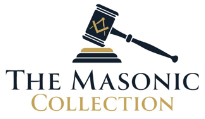
Jewels Used in Freemasonry
Every Freemasonry Lodge is decorated with six jewels. Three of these jewels are regarded as movable, while the remaining three are labelled as immovable. All six are classified as jewels since they have an ethical and honourable propensity which makes them gems of immeasurable value. The movable jewels are called as such because they are not restricted to a specific area of the Lodge. On the other hand, the immovable jewels are termed this way since they are earmarked to specific parts of the Lodge.
The Movable Masonic Jewels
The three movable jewels of a Masonic Lodge are the following:
· Rough Ashler - It is a stone removed from the quarry in its natural state. This movable jewel is a reminder of a person’s rude and flawed state by nature.
· Perfect Ashler - It is a stone improved and mastered by the hands of the fraternity's tradesmen to be perfected with the tools used of the Fellow Craft. This jewel is a reminder of the state of perfection at which each Mason can hope to attain through their moral education, personal endeavour, and the blessing of their Creator.
· Trestle Board – It is a jewel laid for the Master Workman to gather, draw, and inspire his designs upon. It is a representation of how every Mason must attempt to build his spiritual connection based on the designs set by the Great Architect of the Universe.
The Immovable Masonic Jewels
The three immovable jewels of a Masonic Lodge consist of the following:
· Square (or The Square to the East) – The jewel that teaches morality.
· Level (or The Level to the West) – The jewel that represents equality.
· Plumb (or The Plumb to the South) – The jewel that characterizes decency of conduct.
It should be noted that in the English structure, the jewel break-up is the opposite of aforesaid arrangement. There, the movable jewels are the Square, the Level, and the Plumb. They are regarded as the movable gems since they are passed from the three officers who use them to their successors.
